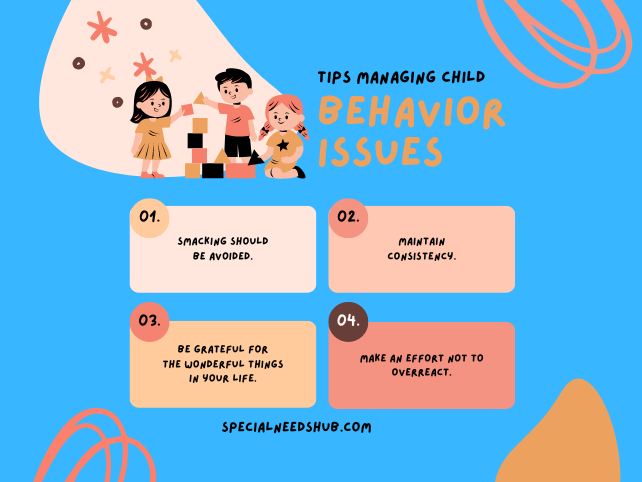
Children with special needs encompass a diverse group of individuals who may face challenges in various aspects of life. These challenges can manifest in their behavior, making it essential for caregivers, parents, and educators to gain a deeper understanding of their unique needs and effective strategies for managing their behavior. This blog aims to shed light on the importance of understanding behavior in children with special needs and offers insights into successful management techniques.
Behavior serves as a form of communication, allowing children to express their needs, emotions, and reactions. For children with special needs, understanding their behavior becomes paramount, as it often offers a glimpse into their internal world. Some common factors that influence behavior in these children include:
- Sensory Sensitivities: Many children with special needs have heightened or diminished sensory responses. Loud noises, bright lights, or certain textures can trigger intense reactions, leading to behaviors such as covering ears, avoiding touch, or becoming agitated.
- Communication Challenges: Some children with special needs struggle with verbal communication. The inability to express themselves verbally can lead to frustration, which might manifest as challenging behaviors like tantrums or withdrawal.
- Routine and Predictability: Children with special needs often find comfort in routines. Any disruption to their routine can cause anxiety and result in behavioral outbursts as they attempt to regain a sense of control.
- Social Interactions: Difficulties in understanding social cues and forming connections can contribute to behaviors like isolation, avoidance, or even aggressive outbursts when overwhelmed.
Effective Strategies for Managing Behavior
Understanding the underlying factors that drive behavior in children with special needs is the first step toward effective management. Here are some strategies that can help create a positive environment for these children:
- Individualized Approaches: Each child is unique. Tailor interventions and strategies to suit the specific needs and preferences of the child. What works for one child might not work for another.
- Visual Supports: Visual schedules, social stories, and visual cues can help children with special needs understand expectations and transitions, reducing anxiety and confusion.
- Sensory Regulation: Create a sensory-friendly environment by identifying triggers and providing sensory outlets. This can include quiet spaces, sensory toys, or headphones to minimize sensory overload.
- Communication Aids: Incorporate alternative communication methods such as sign language, picture communication systems, or augmentative and alternative communication devices to help children express themselves.
- Positive Reinforcement: Use positive reinforcement techniques to encourage desired behaviors. Praise, rewards, and acknowledgment can motivate children to engage in positive actions.
- Collaboration: Foster collaboration among parents, caregivers, educators, and therapists. Sharing insights and observations can lead to a more holistic understanding of the child’s behavior and needs.
- Patience and Empathy: Children with special needs may require more time to process information or communicate. Practicing patience and demonstrating empathy can help build trust and reduce behavioral challenges.
- Professional Guidance: Seek input from professionals such as special education teachers, speech therapists, occupational therapists, and behavioral specialists. Their expertise can provide valuable insights and strategies.
Understanding and managing behavior in children with special needs requires a compassionate and proactive approach. By recognizing the unique challenges these children face and employing effective strategies, we can create an environment that supports their growth, development, and well-being. Remember, every small step towards better understanding and management can make a significant positive impact on the lives of these children and their families.


